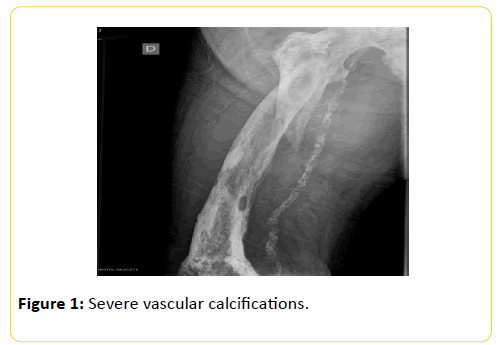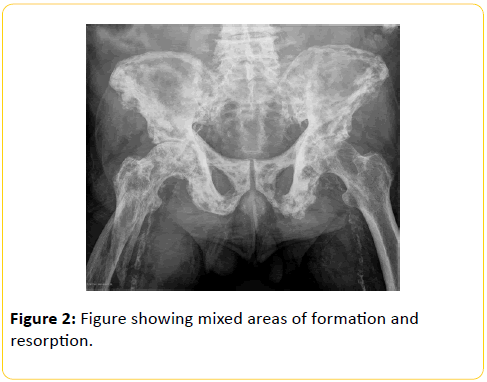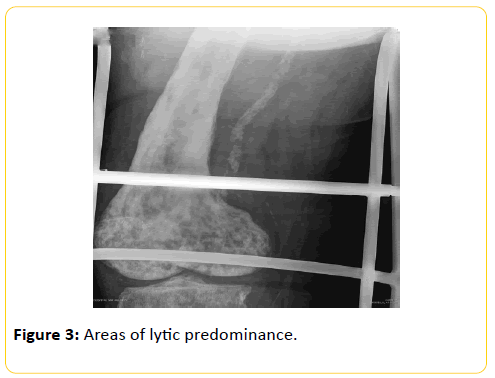Clinical Images - (2017) Volume 2, Issue 4
Sagrario María Santos Seoane*, Victor Arenas García, María Gallego Villalobos and Rocío Martínez Gutierrez
Hospital San Agustin, Aviles, Asturias, Spain
*Corresponding Author:
Sagrario María Santos Seoane
Hospital San Agustin, Aviles, Asturias, Spain
E-mail: smsspulp@yahoo.es
Received date: July 04, 2017; Accepted date: July 07, 2017; Published date: July 17, 2017
Citation: Seoane SMS, Garcia VA, Villalobos MG, Gutierrez RM (2017) Clinical Image: Fracture of the Femur in the Context of Polyostotic Paget's Disease. Trauma Acute Care 2:50. doi:10.21767/2476-2105.100050
Copyright: © 2017 Seoane SMS, et al. This is an open-access article distributed under the terms of the Creative Commons Attribution License, which permits unrestricted use, distribution, and reproduction in any medium, provided the original author and source are credited.
Paget disease of bone is a focal disorder of bone metabolism that occurs in the aging skeleton. It is characterized by an accelerated rate of bone remodelling, resulting in overgrowth of bone at single (monostotic PDB) or multiple (polyostotic PDB) sites and impaired integrity of affected bone. Commonly affected areas include the skull, spine, pelvis, and long bones of the lower extremity. The majority of patients are asymptomatic. The diagnosis is usually made incidentally following a routine chemistry screen showing an elevated serum concentration of alkaline phosphatase of bone origin or an imaging study obtained for some other reason that shows pagetic changes in bone. Traumatic and pathologic fractures are the most common complications of pagetic lesions in the long bones. Femoral fractures are more frequent than tibial fractures. The most common femoral site is in the area below the lesser trochanter. Fractures are usually transverse and perpendicular to the cortex. They can be either complete or incomplete (fissure fractures). Fissure fractures tend to occur along the convex surfaces of the curved bones but may progress to become complete fractures over time. Fracture of pagetic bone may be associated with substantial blood loss.
Keywords
Paget disease; Femur; Fracture
Clinical Case
We present the case of a 91-year-old man with history of hypertension, diabetes, chronic renal disease, peripheral artery disease with right and left infracondylar amputation, and Paget's disease [1-3]. He was admitted in the hospital for presenting right femur fracture after accidental fall of bed. A traction was placed for better alignment of the fracture before surgery. The radiographs identify the musculoskeletal consequences of Paget disease, including fractures and deformity bones, the intense bone remodeling with thickened of the cortical and accentuated trabeculation, and the severe vascular calcifications in the context of his peripheral arteriopathy (Figure 1). The other radiographs show areas in which the osteoblastic response predominates with thickening of the cortical bone and increased bone density in sclerotic phase (evident around the obturation holes), mixed areas of formation and resorption (both phases are shown in Figure 2), and areas of lytic predominance such as those shown at the level of the femoral condyles (Figure 3).

Figure 1: Severe vascular calcifications.

Figure 2: Figure showing mixed areas of formation and resorption.

Figure 3: Areas of lytic predominance.